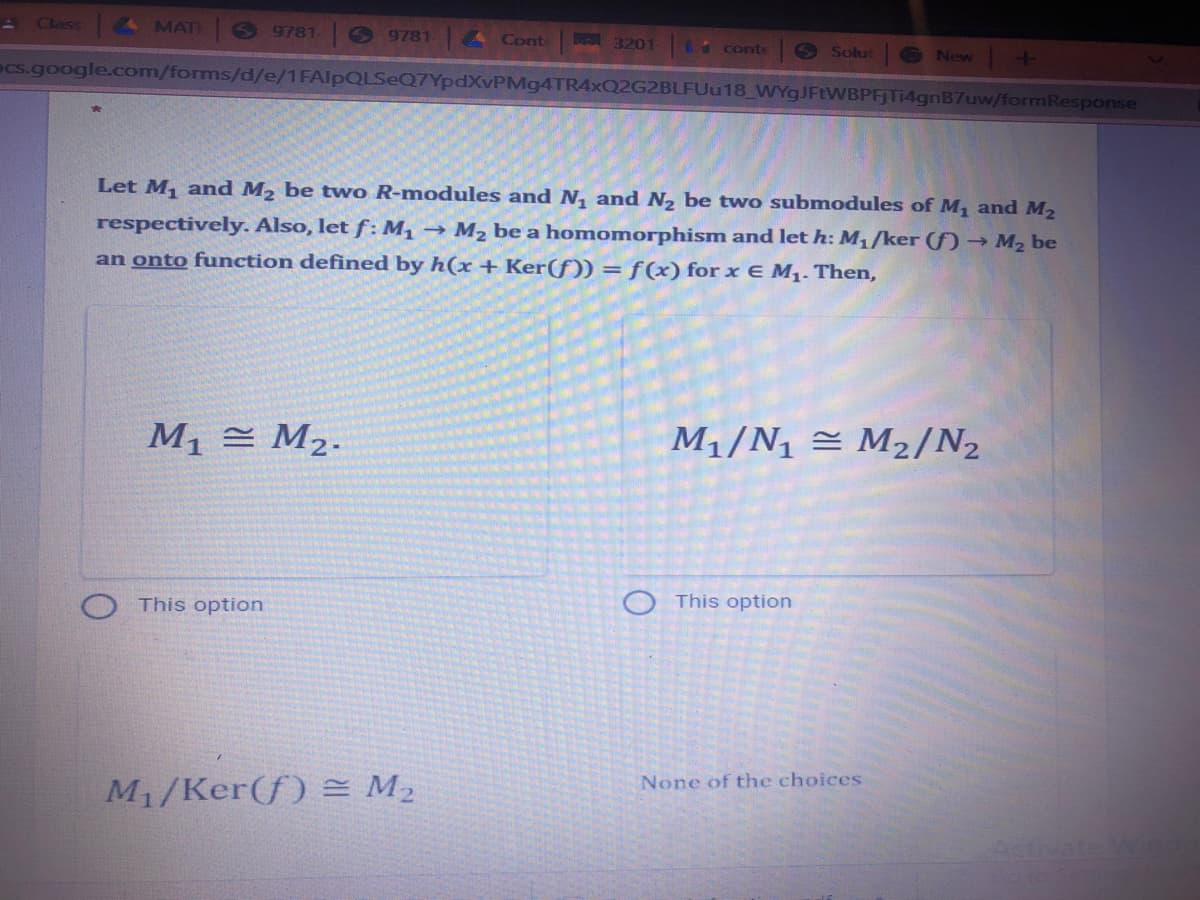Let M, and M2 be two R-modules and N, and N2 be two submodules of M, and M2 respectively. Also, let f: M, → M2 be a homomorphism and let h: M,/ker ()→ M2 be an onto function defined by h(x + Ker(f)) = ƒ(x) for x E M1. Then, M1 = M2. M1/N1 = M2/N2 O This option O This option None of the choices M1/Ker(f) = M2
Let M, and M2 be two R-modules and N, and N2 be two submodules of M, and M2 respectively. Also, let f: M, → M2 be a homomorphism and let h: M,/ker ()→ M2 be an onto function defined by h(x + Ker(f)) = ƒ(x) for x E M1. Then, M1 = M2. M1/N1 = M2/N2 O This option O This option None of the choices M1/Ker(f) = M2
Algebra & Trigonometry with Analytic Geometry
13th Edition
ISBN:9781133382119
Author:Swokowski
Publisher:Swokowski
Chapter10: Sequences, Series, And Probability
Section10.7: Distinguishable Permutations And Combinations
Problem 16E
Related questions
Question

Transcribed Image Text:Class
MAT
O 9781
9781. Cont
A 3201 6 conte
O Solut
New
ecs.google.com/forms/d/e/1FAlpQLSeQ7YpdXvPMg4TR4xQ2G2BLFUu18_WYgJFtWBPFTi4gnB7uw/formResponse
Let M, and M2 be two R-modules and N, and N2 be two submodules of M, and M2
respectively. Also, let f: M, → M2 be a homomorphism and let h: M,/ker () → M2 be
an onto function defined by h(x + Ker(f)) = ƒ(x) for x E M1. Then,
M1 = M2.
M1/N1 = M2/N2
O This option
This option
None of the choices
M1/Ker(f) = M2
Activate Ming
Expert Solution
This question has been solved!
Explore an expertly crafted, step-by-step solution for a thorough understanding of key concepts.
This is a popular solution!
Trending now
This is a popular solution!
Step by step
Solved in 2 steps

Recommended textbooks for you

Algebra & Trigonometry with Analytic Geometry
Algebra
ISBN:
9781133382119
Author:
Swokowski
Publisher:
Cengage

Algebra & Trigonometry with Analytic Geometry
Algebra
ISBN:
9781133382119
Author:
Swokowski
Publisher:
Cengage